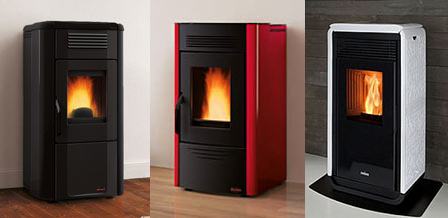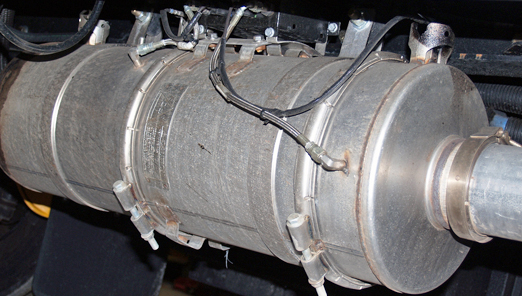There are several ways for successful mitigation of black carbon emissions. As black carbon is a product of incomplete combustion, it is possible to reduce the forming of black carbon particles by improving the combustion processes. It is also possible to mitigate the emissions by cleaning flue gases after the combustion process. Most important mitigation measures in global context include cleaner residential combustion stoves, diesel particulate filters, ban of agricultural waste burning and more efficient processes in traditional coking and brick making.
Black carbon mitigation affects also other air pollutants
The processes that cause black carbon emissions produce also other gaseous and particulate air pollutants. Some of the co-emitted pollutants cause warming of the atmosphere and some, such as organic carbon and sulphur dioxide, lead to cooling. Therefore the most attractive mitigation options to affect climate warming focus on measures that lead to substantial black carbon reductions but reduce relatively less or not at all the cooling co-emitted pollutants. Such mitigation options include for example cleaner fuels or improved combustion devices for households and particulate filters for vehicles.
Particulate matter legislation reduces black carbon
Black carbon has not been included in emission limit legislation so far, but its emissions in some source sectors are affected indirectly by other air pollutant legislation, especially those targeting particulate matter (PM). For example, the most recent Euro-standards that set particulate matter emission limits for diesel vehicles reduce also efficiently black carbon since diesel emissions are rich in black carbon and the particulate filters used in the vehicles reduce efficiently also black carbon particles. The table (below) from the UNEP/WMO (2011) report compiles technology packages or portfolios to reduce black carbon emissions and demonstrates the mitigation opportunities of BC at global context.
| BC measures (affecting BC and other co-emitted compounds) |
|---|
| Diesel particle filters for road and off-road vehicles | Transport |
| Elimination of high-emitting vehicles in road and off-road transport |
| Replacing coal by coal briquettes in cooking and heating stoves | Residential |
| Pellet stoves and boilers, using fuel made from recycled wood waste or sawdust, to replace current wood-burning technogies in the residential sector in industrialized countries |
| Introduction of clean-burning biomass stoves for cooking and heating in developing countries1,2 |
| Substition of clean-burning cookstoves using modern fuels for traditional biomass cookstoves in developing countries1,2 |
| Replacing traditional brick kilns with vertical shaft kilns and Hoffman kilns | Industry |
| Replacing traditional coke ovens with modern recovery ovens, including the improvement of end-of-pipe abatement measures in developing countries |
| Ban of open field burning of agricultural waste1 | Agriculture |
1Motivated in part by its effect on health and regional climate, including areas of ice and snow.
2For cookstoves, given their importance for BC emissions, two alternative measures are included.
 Pellet stoves. Photos: Tulituote Oy (left and center) and Kardonar (right)
Pellet stoves. Photos: Tulituote Oy (left and center) and Kardonar (right)
Non-technical mitigation by enhanced combustion practices
Successful mitigation is not only about designing efficient technologies. There are also ways to reduce emissions that do not involve technological improvements. For example, teaching people to enhance their practices to use their stoves to achieve more efficient combustion and thus lower emissions might be an option to reduce emissions of black carbon. Such enhancements can be aspired by targeted information campaigns.


 Photo: Flickr, Massachusetts Dept of Environmental Protection
Photo: Flickr, Massachusetts Dept of Environmental Protection


 Pellet stoves. Photos: Tulituote Oy (left and center) and Kardonar (right)
Pellet stoves. Photos: Tulituote Oy (left and center) and Kardonar (right)